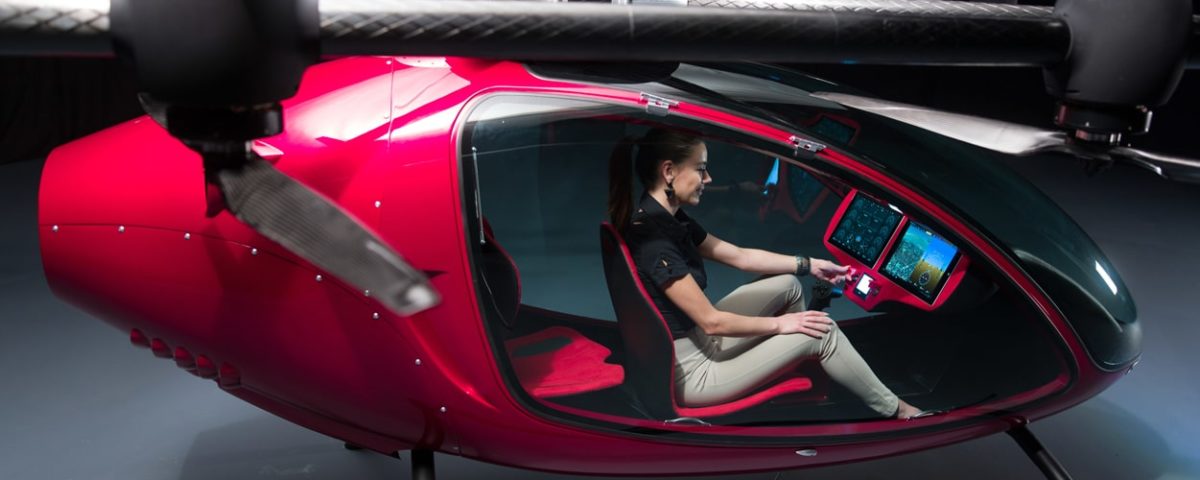Science fiction is a strange genre as it has a habit of predicting future technology. Space travel, wireless communication, nuclear energy, etc. are all just some examples of this.
One such technology that science fiction predicted and is about to become a reality is flying cars in the form of passenger drones.
Drones have already enhanced our lives in ways you might not even realize. From providing breath-taking areal footage to showing the first glimpses of some of the most inaccessible places on earth, drones have been making vast inroads and are pretty much a main-stream technology these days.
It is time to take them to the next level and many tech companies around the world are primed and ready to make that leap.
Can Drone Replace Cars?
Until recently, the viability and practicality of passenger drones were considered too big an obstacle for them to be more than a figment of the imagination. However, the world’s roads are getting crowded and there are only so many new roads, highways and flyovers that can be built. The solution to this dilemma is an autonomously driven passenger drone.
Drone technology has been around for some time and making one that is large enough to transport people isn’t the issue. Unlike driving a car, flying a drone is a lot more complicated and the risk of casualties would rise many folds if the controls were left in the hands of everyday human beings and that is where the challenge lies.
We are still to see a viable and working autonomous car where you can just get in and let it drive you to your destination irrespective of the conditions that would be encountered along the way. The good news though is that work on automated passenger drones has already started. This is by no means an easy task and will take a lot of human ingenuity and prowess to achieve
Thankfully, some of the best and brightest minds of the world are hard at work with the backing of some of the biggest firms in the world to make this a reality. The automobile industry is reaching a saturation point and a time will come where cars will become a relic of the past.
It is because of this that industry giants are pursuing this avenue with all their might. Uber recently hired NASA scientist Mark Moore to develop their line of autonomous passenger drones. Equally hard at work are firms like Google and Tesla. It is not just the big boys who are at play here. Start-ups like EHANG, ZEE Aero, Kitty Hawk, etc. are all in the rat race to get a share of what would be the defining technology of the not so distant future.
The challenges
All these firms that are working on passenger drone technology are fairly optimistic that they will have working prototypes ready in the next 3-5 years.
While this is promising, it doesn’t tell us is the time-frame for this technology to go from a prototype stage to a fully-functional stage and here are some of the obstacles standing in its way.
Here’s our thoughts on some of the headwinds (pun intended) we foresee before passenger drones become a safe and preferred alternative for personal transportation.
Flight regulation
A whole new set of drone rules and regulations have to be formed and ironed out to govern the usage of passenger drones.
Like with any transportation technology, safety is paramount here and governments and regulating bodies have to come up with ways to make this technology safe and non-threatening for the general public.
Cost of ownership
As with any new technology, passenger drones are not going to be cheap. The upfront costs would be pretty high and as long as they do not become affordable for the masses, it is not going to become a mainstay of human civilization.
Another important part of the equation is the cost of maintaining it. With regular use, it will need regular maintenance which will be a bit more complicated than getting a car serviced. A new mode of transporting these drones also has to be developed as you cannot simply tow it using another drone (more on that in a minute…)
All these have to be taken into consideration before people are expected to invest in them. While there is every chance that passenger drones can become practical in the next decade or so, it will take a few more decades for them to become mainstream and a staple of human existence.
Security
The biggest concern has to be safety as it would mean chaos if someone were able to hack into the autonomous system and manipulate it for nefarious means. It could also give rise to a whole new breed of criminals and crimes.
Strict measures have to be taken to avoid these kind of headaches and human well-being should always have to be given the priority.
Transportation
Since my normal job is as a towing company owner in St Louis (www.ReliableGuysTowing.com), I have to consider road transportation logistics should the passenger drone become incapacitated or in need of repair.
Luckily all the larger drones companies employ secure lifting hooks or eyebolt threads on top of the cabs. The issue then becomes: Where do I find a crane to lift 2000+ lbs. of drone onto my flatbed tow truck?
Conclusion
As a certified future-geek, I cant wait for the day when we’re all zipping around airborne in silent hover-crafts, however just like any other nascent technology, fully automated passenger drones have a long way to go
The good new is that with some of the biggest names and the sharpest minds working on making it a reality, it is only a matter of time before these become the de-facto method of transportation. It is not a question of if it will happen but when it will happen.


